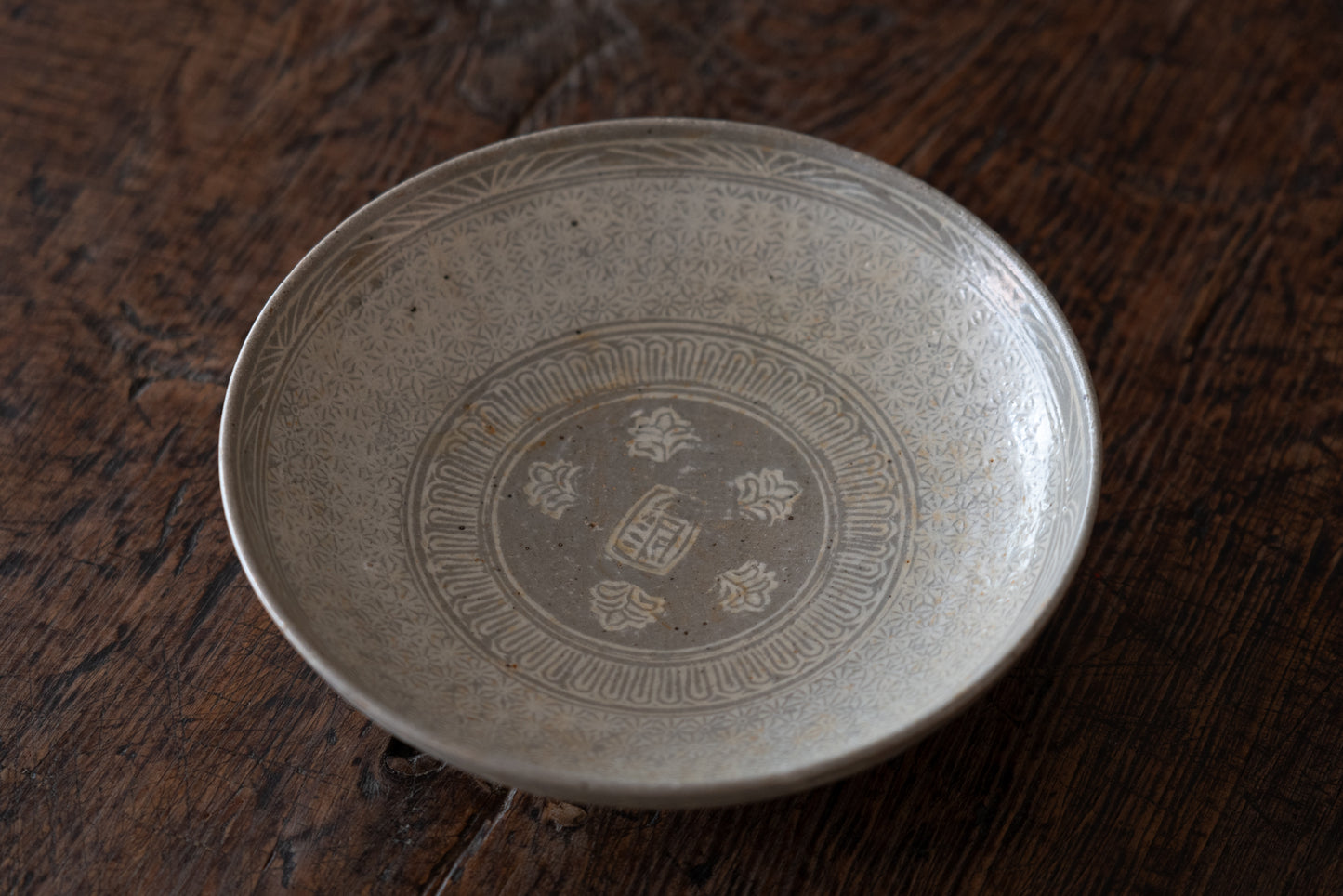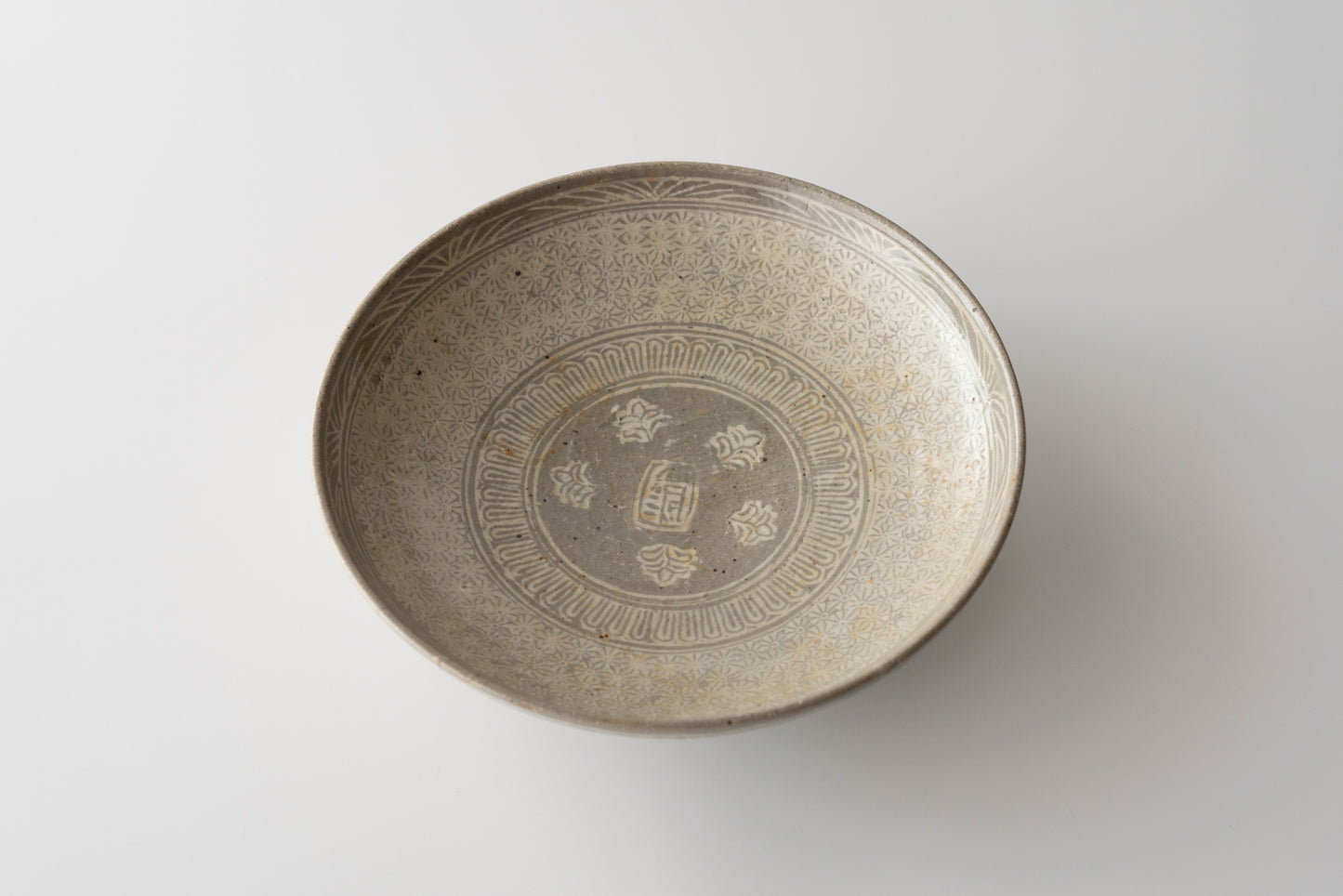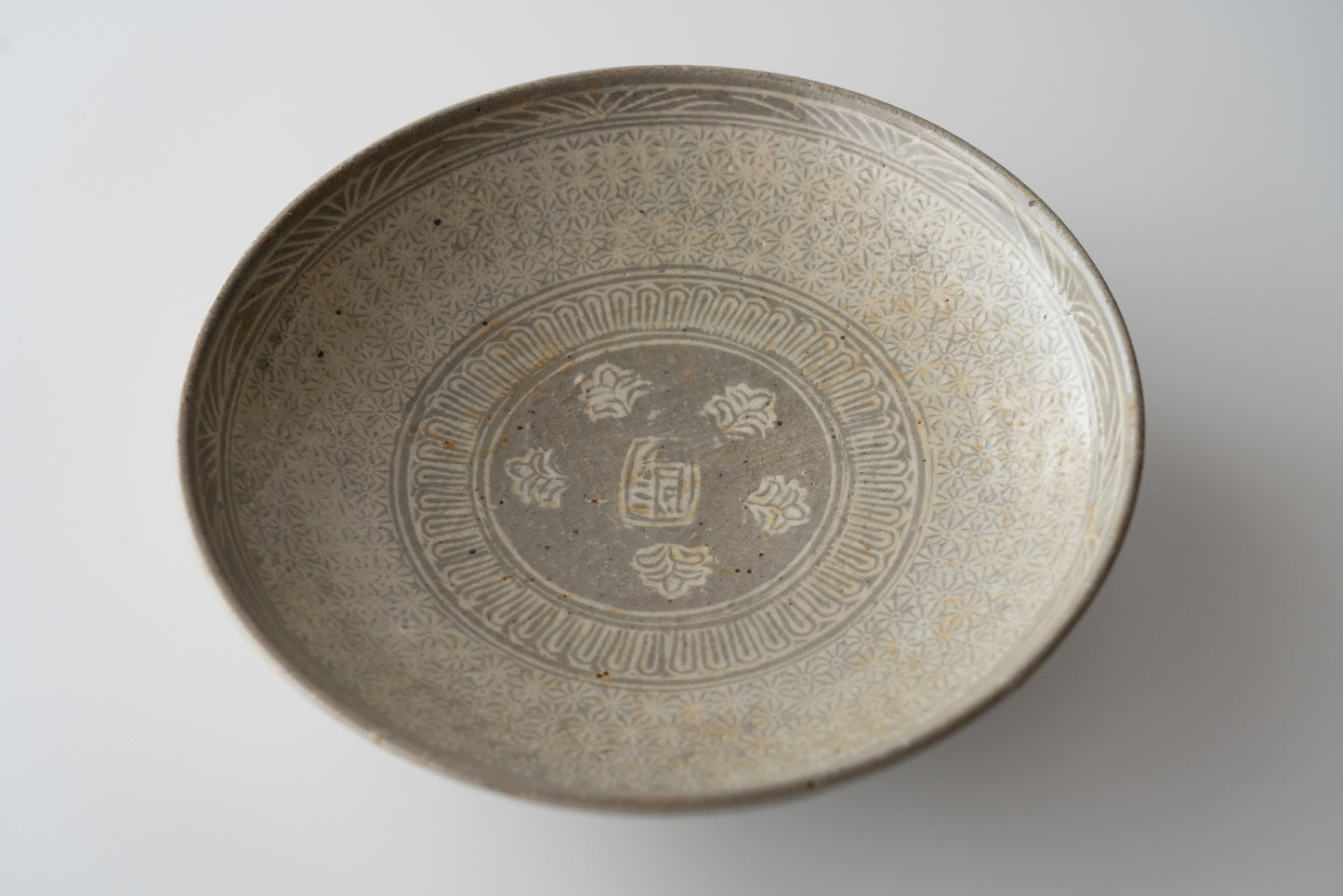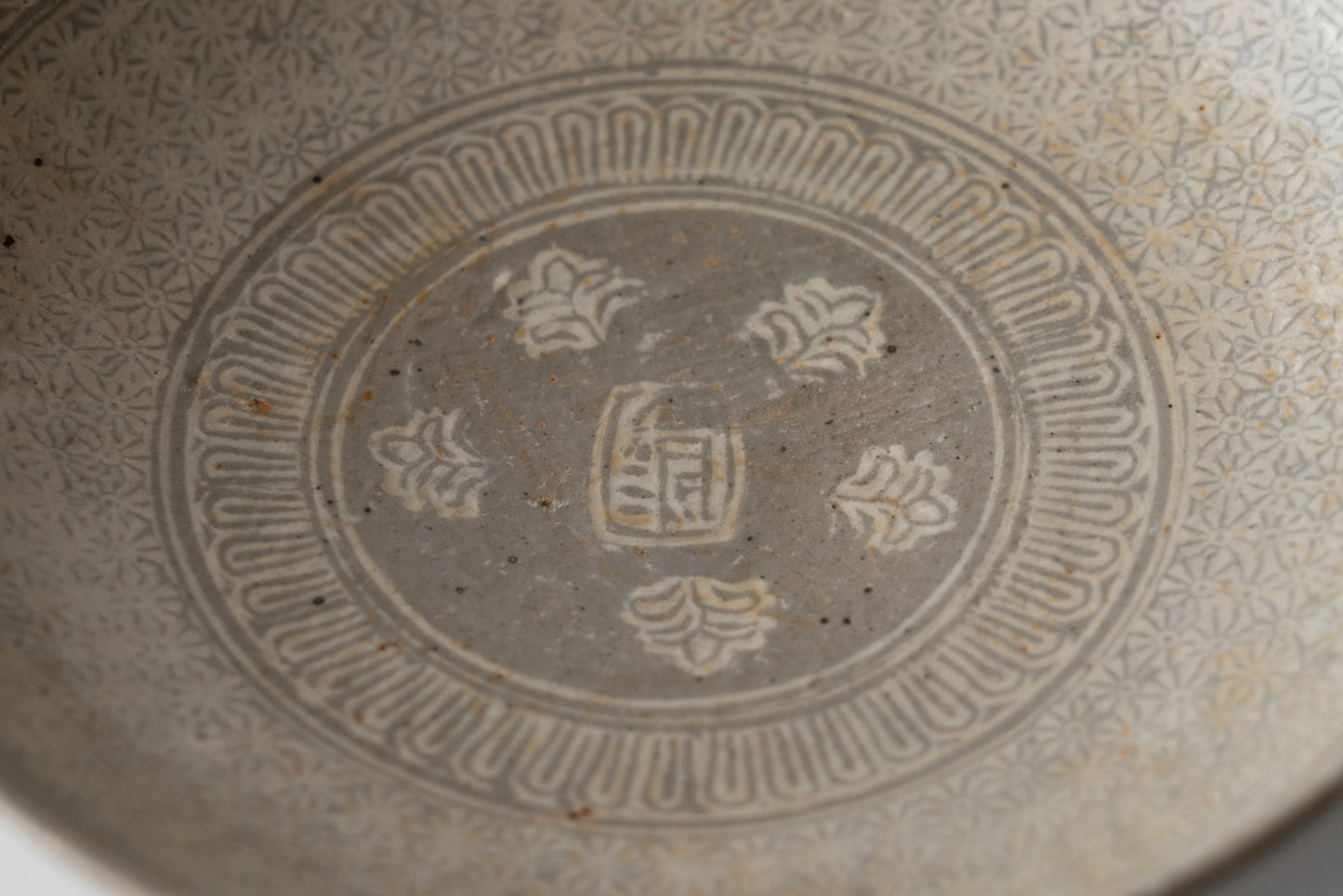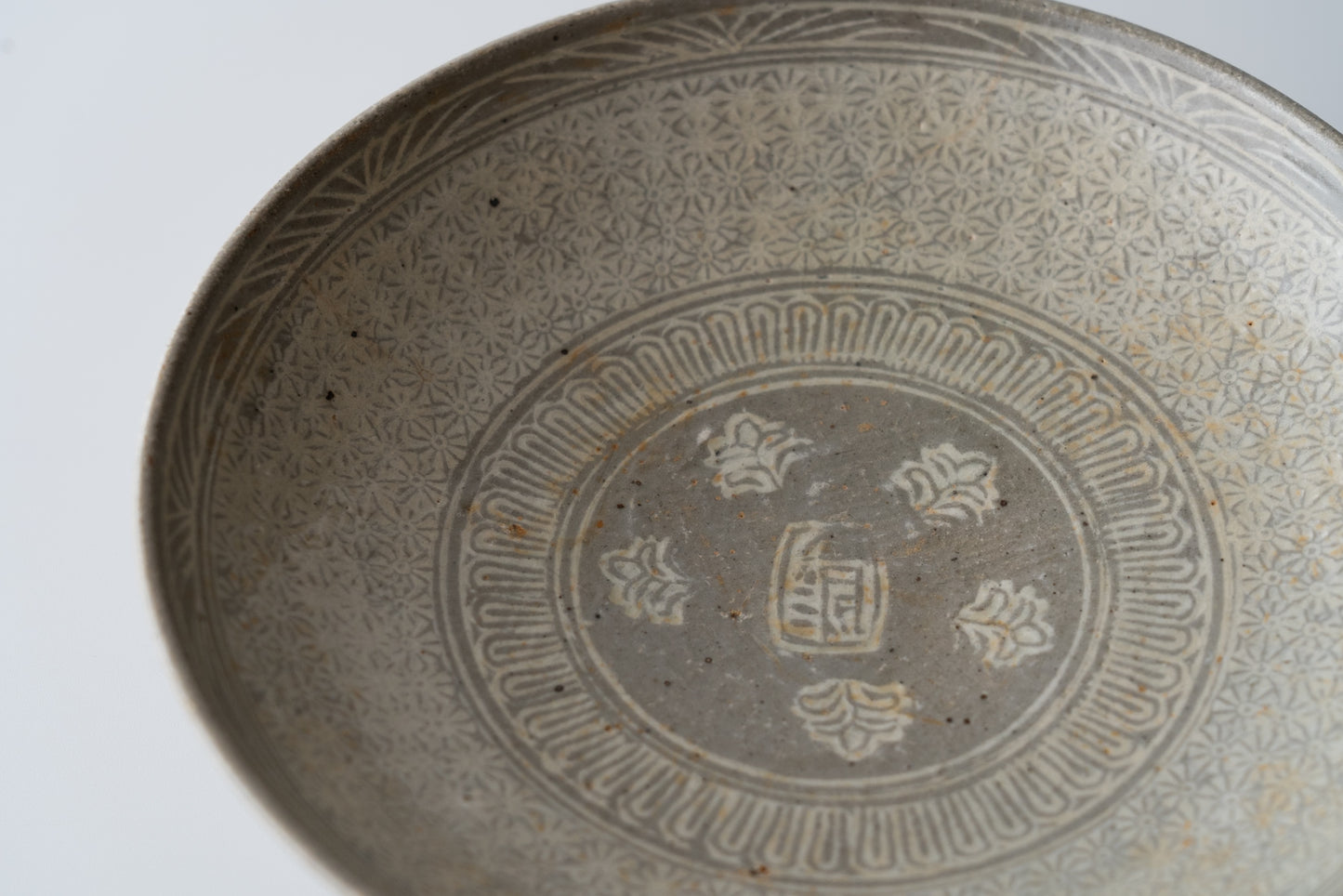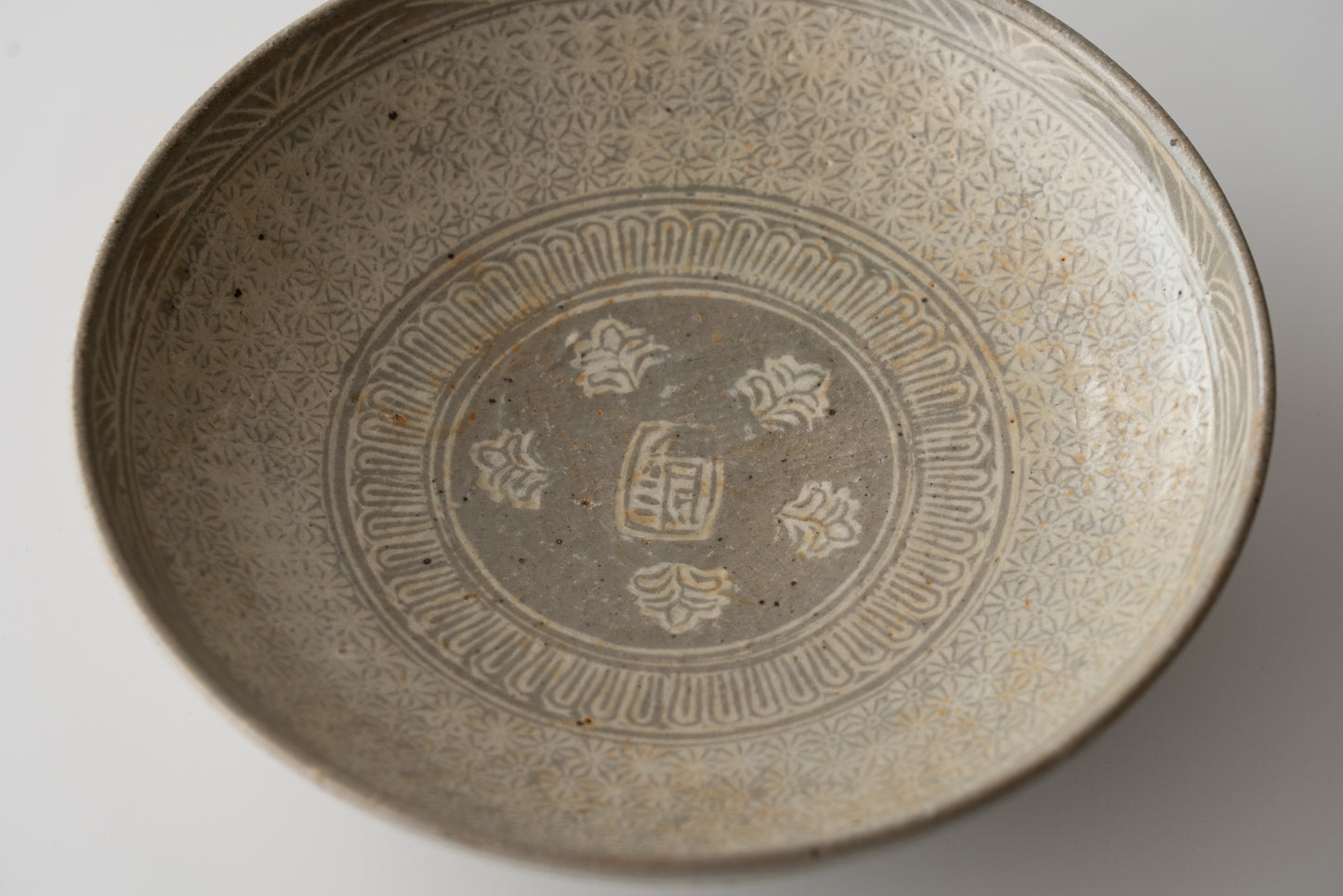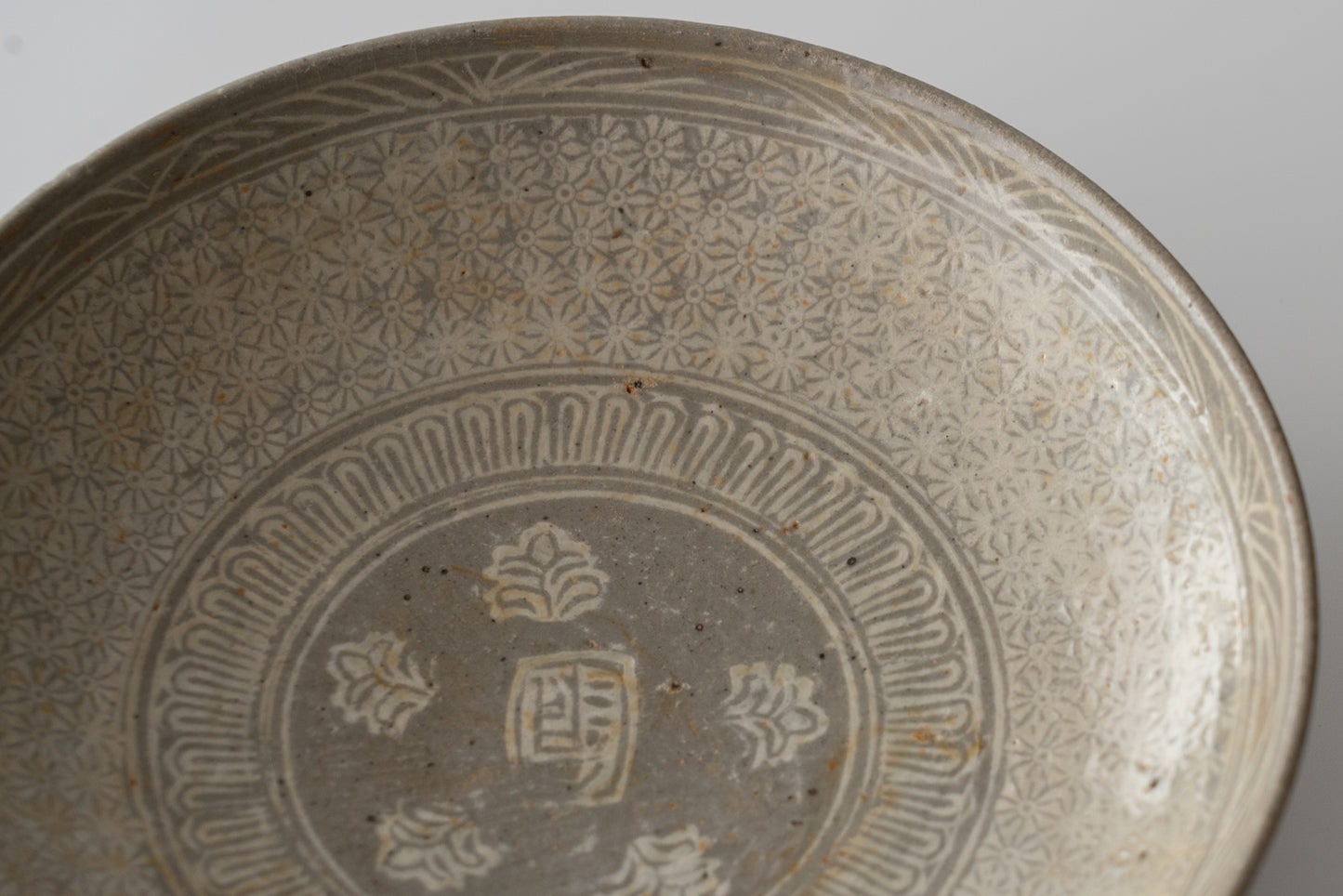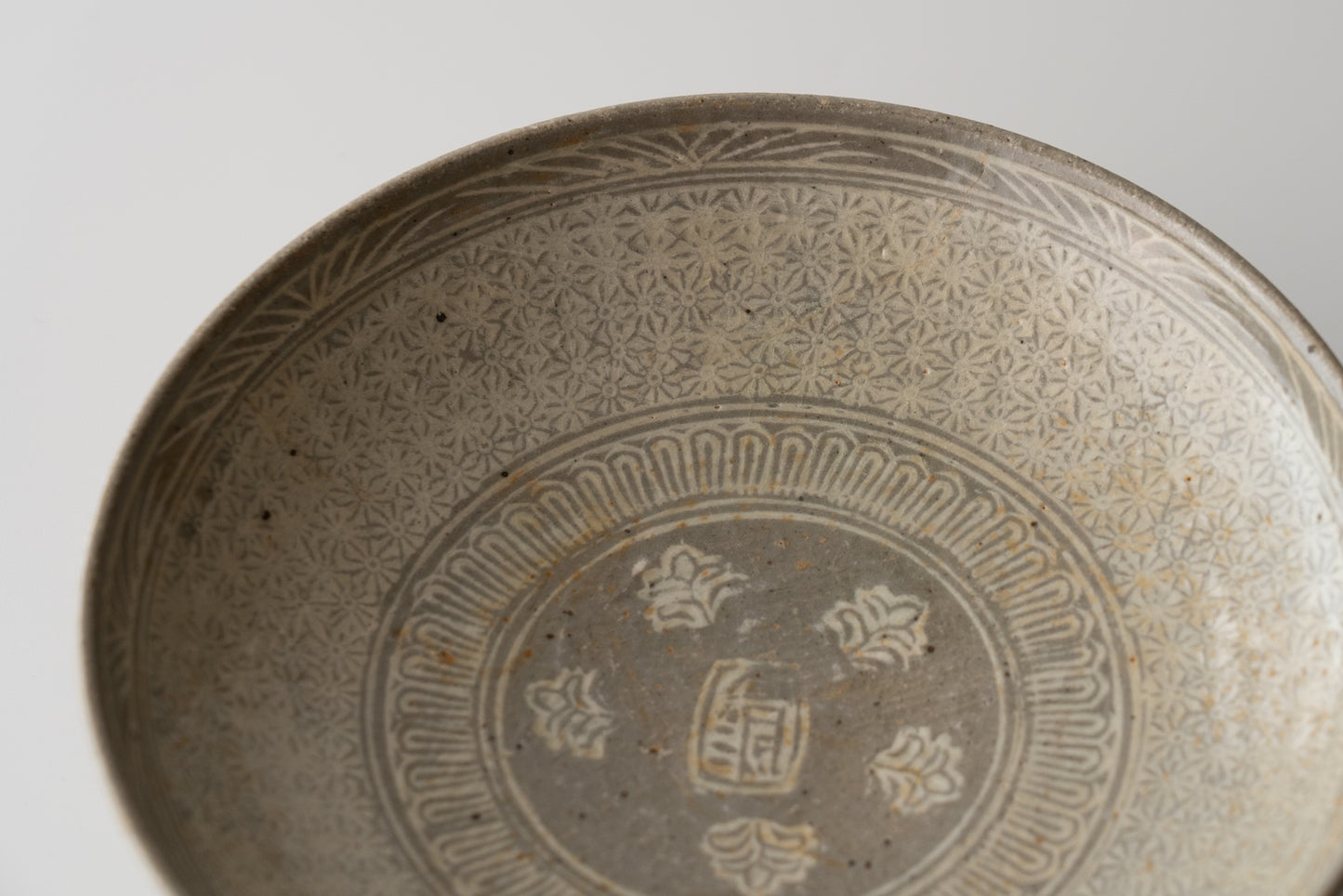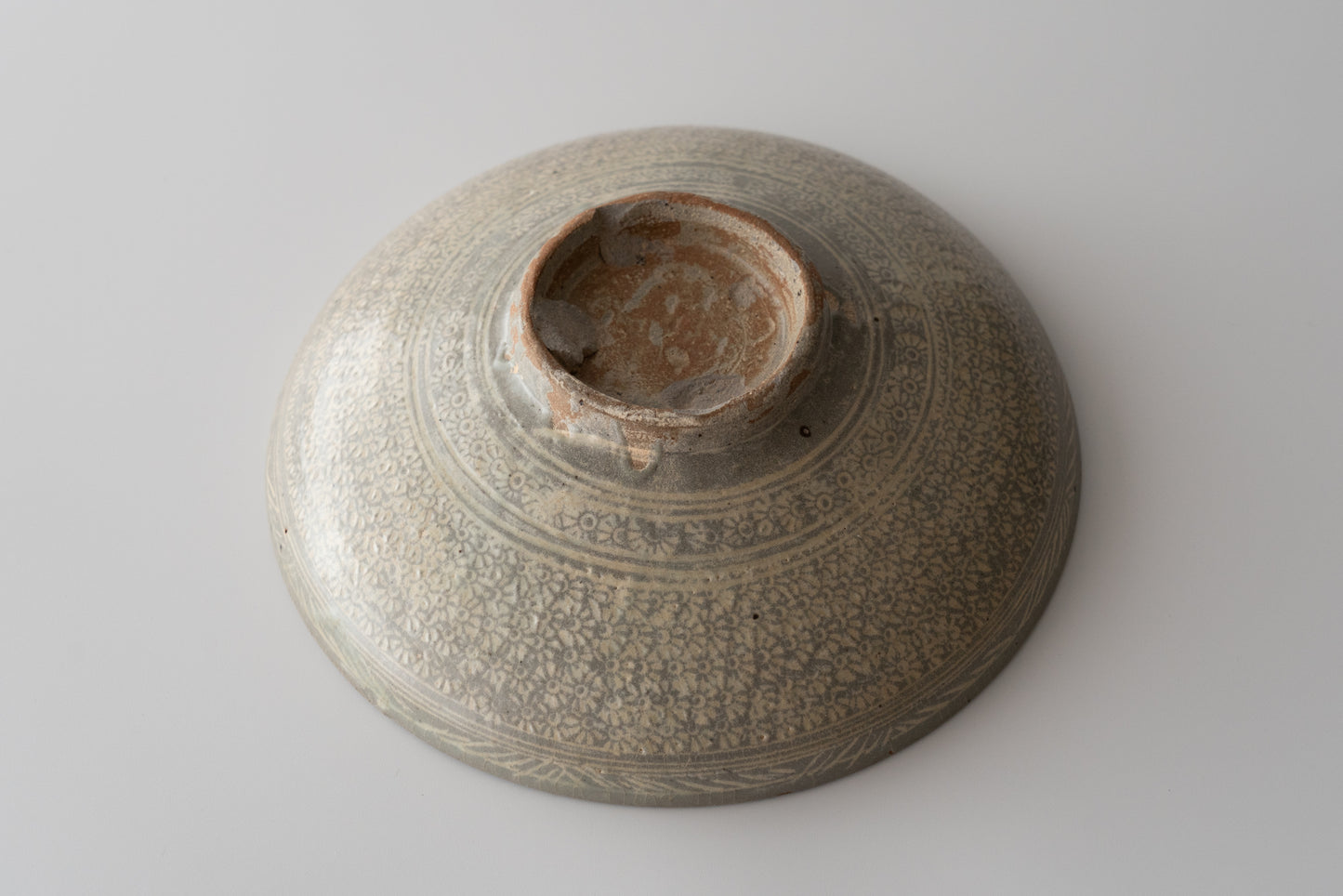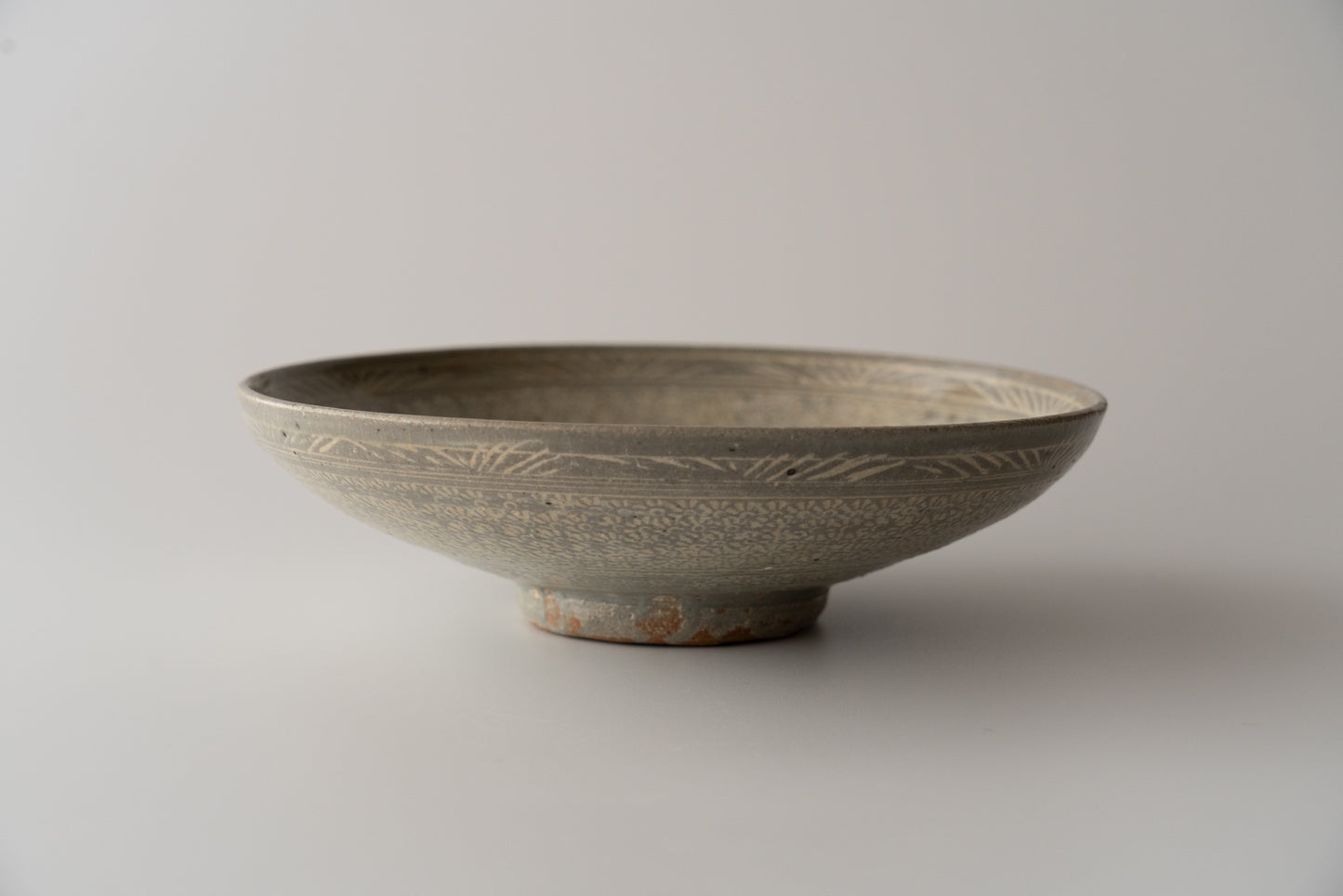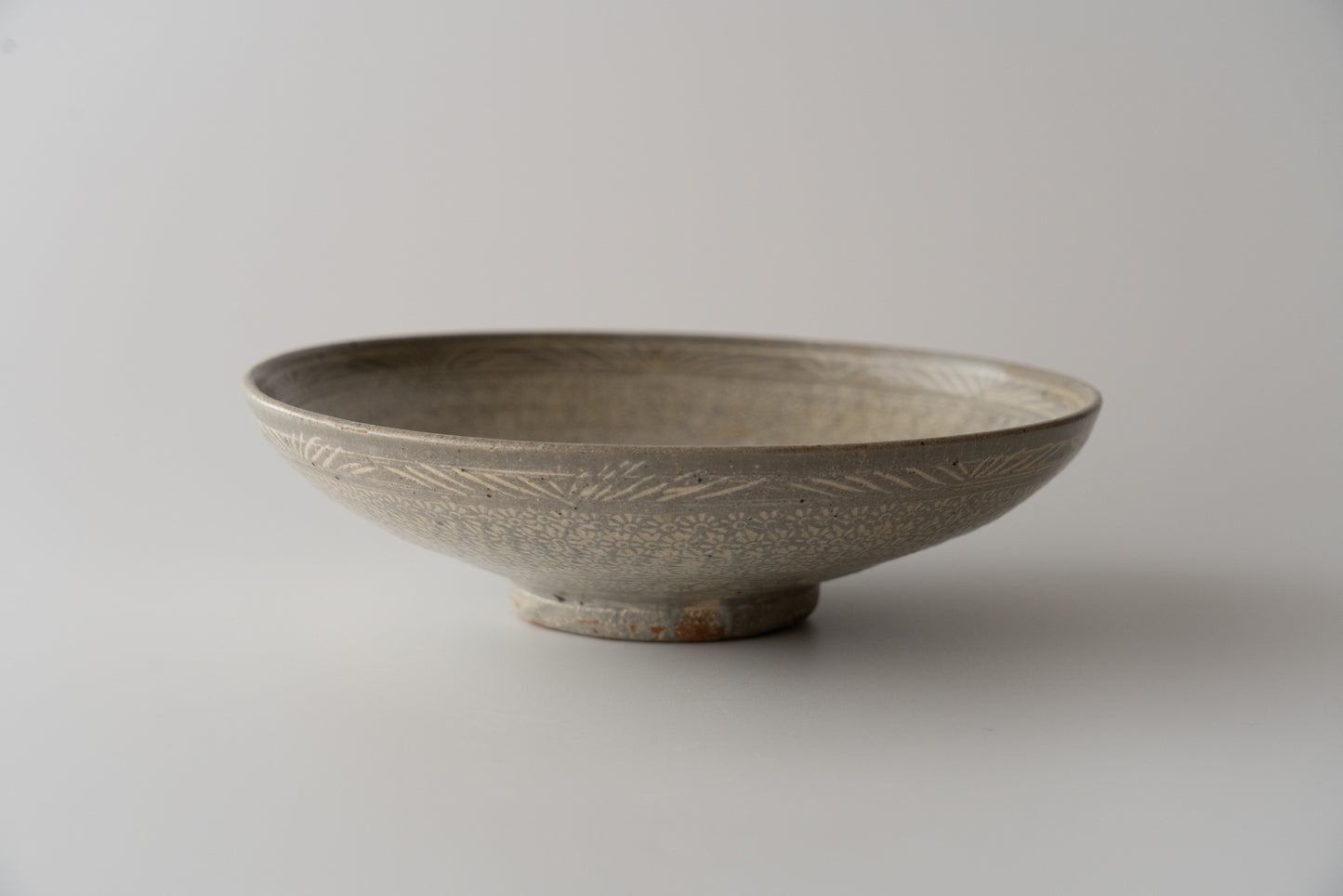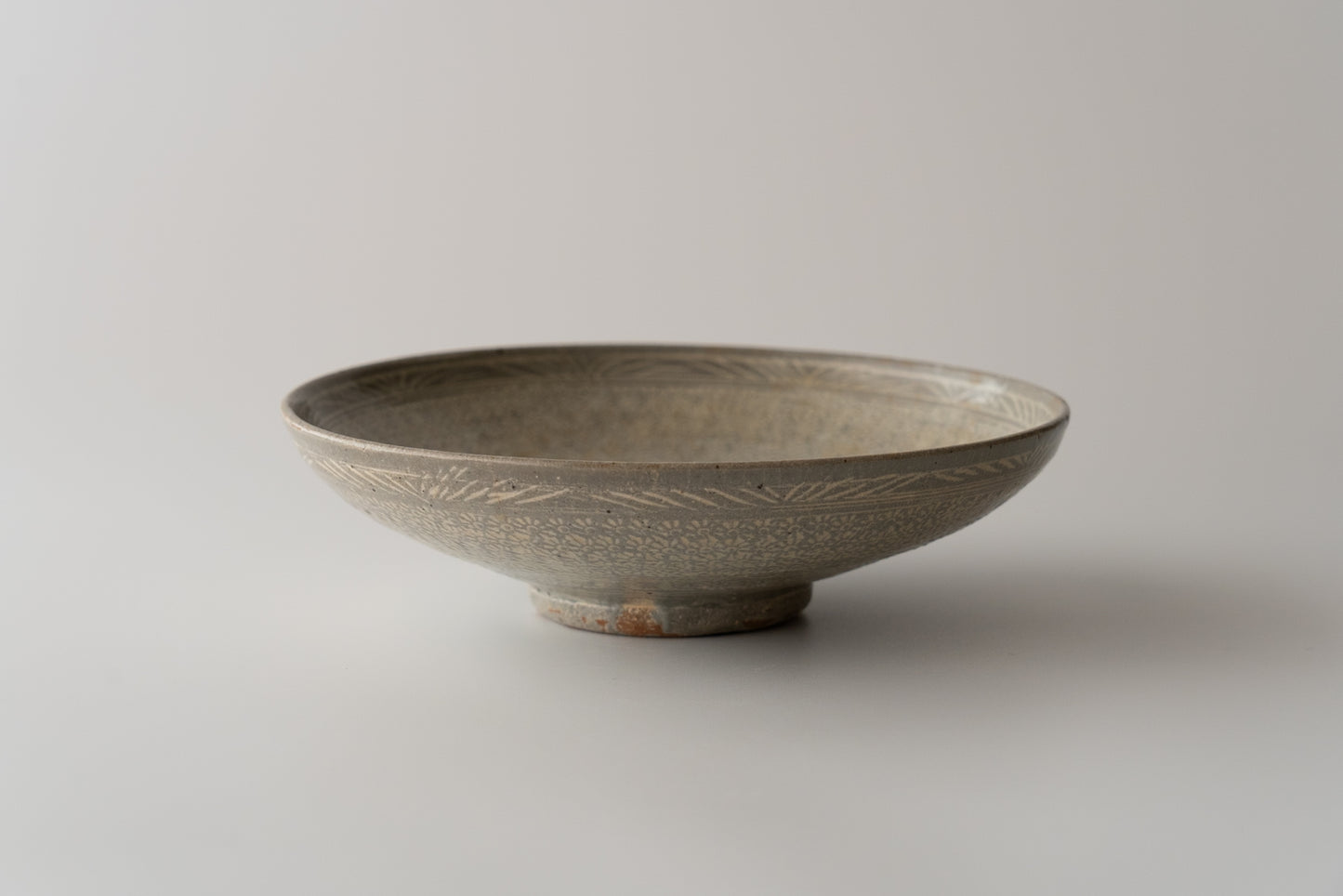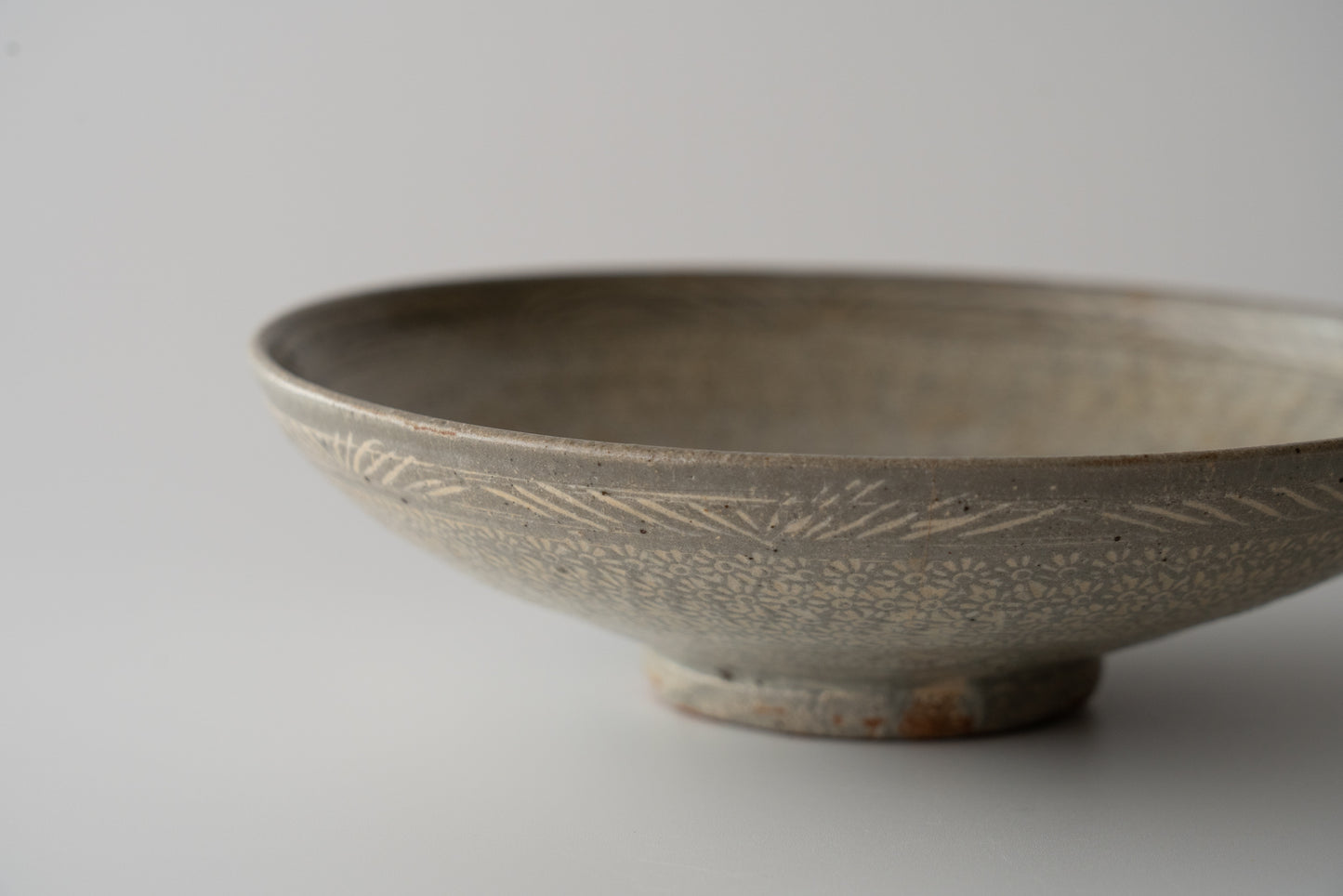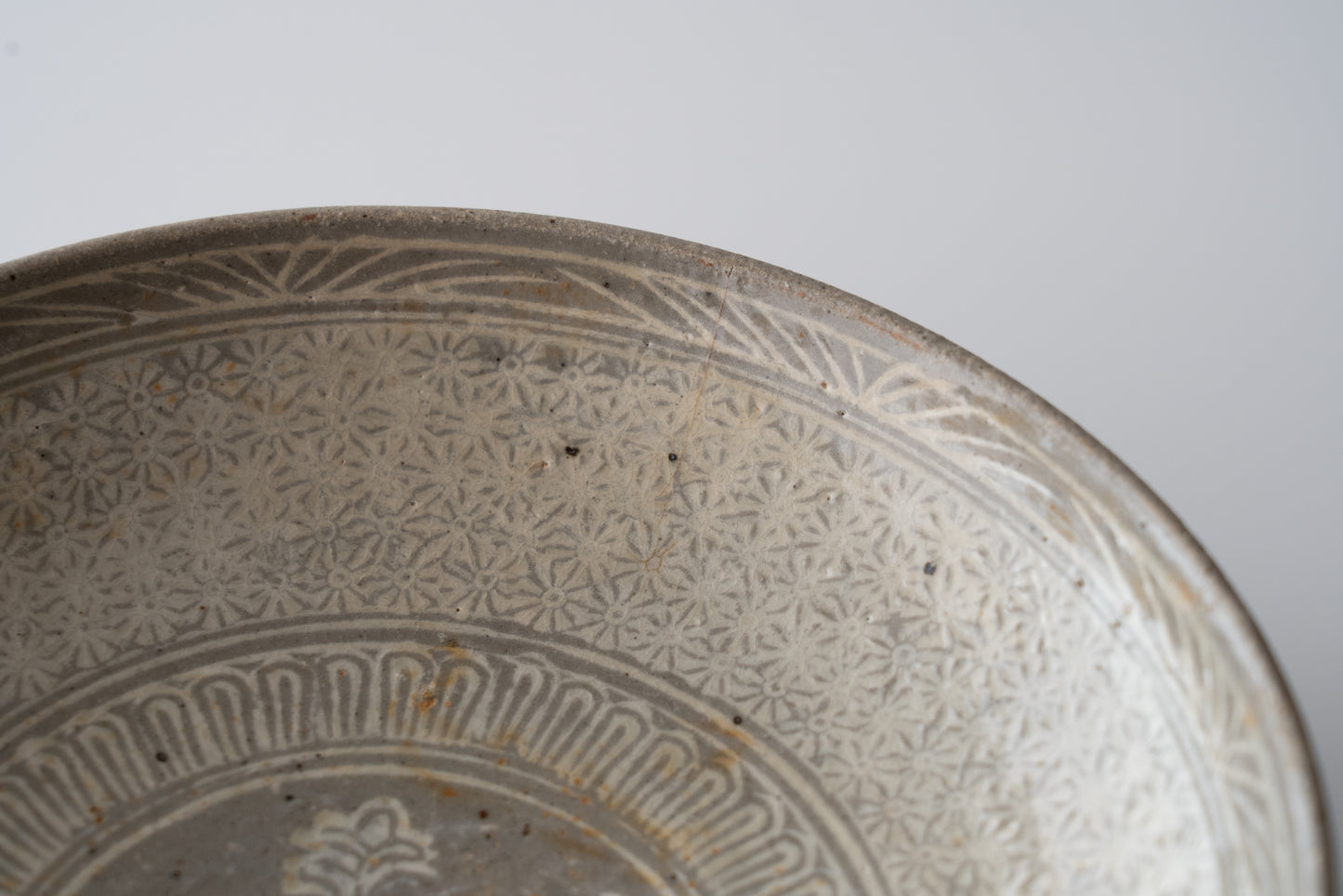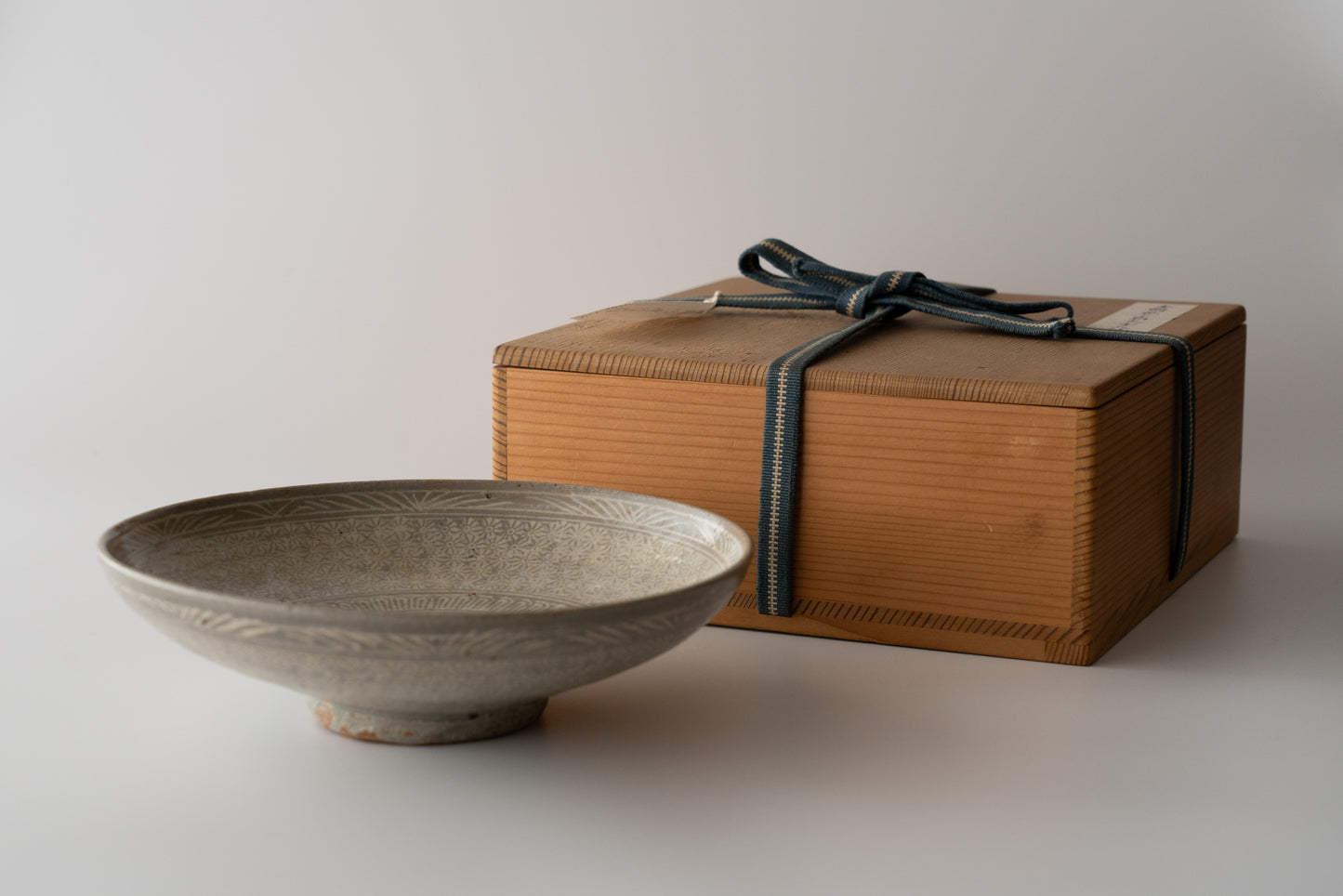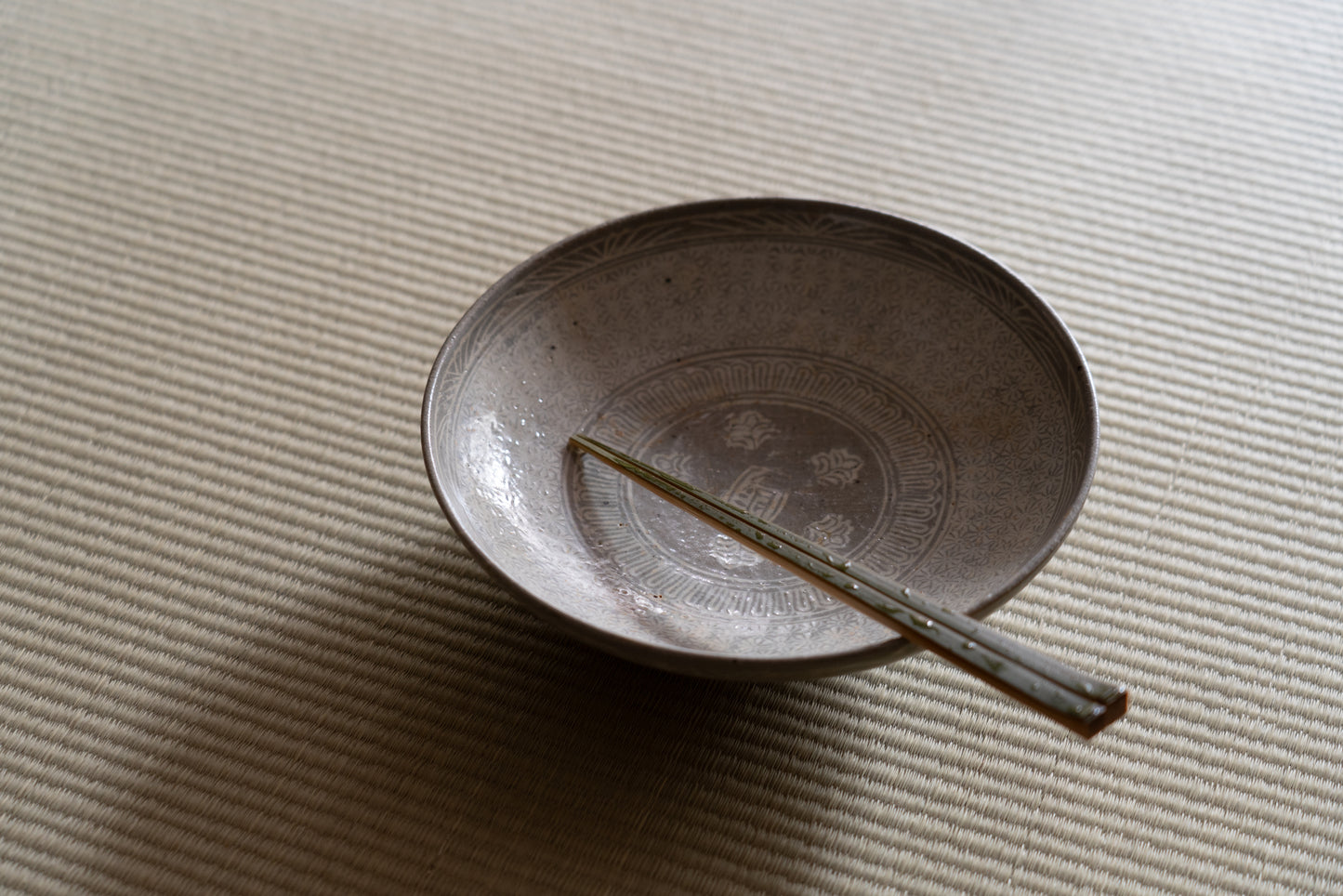Buncheong bowl with impressed chrysanthemum design and inscription "Kinkai"
- Region/Era Korean Peninsula / Joseon Dynasty 15th century
- Size H5.7×W20.6×D20.6cm
- Condition 2 hairline cracks on the edge
- Accessory paulownia box
- No. 41nk-124
The inside is divided into stripes with linear patterns and decorated with various patterns. The edges are arc-shaped, the widest part has a stamped floral pattern and a sawtooth pattern, and in the center, making use of the white space, there is a floral pattern and an inscription engraved on it.
The decoration is very careful, with the prints arranged in an orderly fashion and creating a clear contrast with the base material.

The floral motifs around the inscription are relatively rare for Mishima seals, and what makes them unique is that they are similar to the patterns seen on pottery from the Silla period. The contrast between the areas that make use of the white space and the areas that are densely decorated creates a pleasing impression.

Although the first character of the inscription in the center is not clearly legible, it is thought to be "Kinkai (金海)."
Buncheong ware from the 15th century, known in Japan as "Mishima Koyomite," often bears the name of the region where it was made or the name of the government agency that managed the pottery. One representative inscription is the name of Kinkai, a place close to Busan where much of the ware was made.


This piece is not only rare because it is inscribed, but also because of the precision of its decoration and the excellent workmanship. This type of pot is prone to scratches and repairs, but this piece is in good condition with only two light dents.
From a historical perspective, it is difficult to summarise in a single sentence, but from a practical standpoint, Joseon pottery is extremely durable and can be used in a variety of situations.
The diameter is just over 20 cm. The moderate depth also makes it easy to handle.

To pick up and see the actual item in the gallery.
Reservation